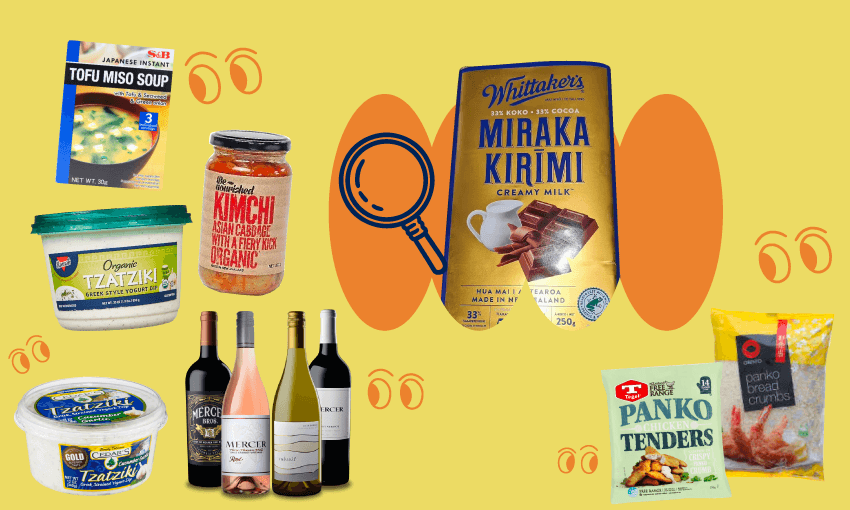You won’t believe how many other foods with non-English names there are in New Zealand supermarkets.
Following the shocking news that Whittaker’s has renamed its creamy milk chocolate using one of the official languages of Aoteraoa New Zealand that isn’t English, a Spinoff investigation has uncovered that there are many, many other foods with names that aren’t English in our supermarkets – and most aren’t even in one of our three official languages. Here’s a brief guide for confused English speakers:
Tzatziki
Yoghurt and cucumber dip. Greek.
Kimchi
Korean. A spicy, fermented cabbage.
Panko
Panko is a Japanese word for breadcrumbs made with bread without crusts.
Ramen
Noodles, Japanese.
Ramyun
Noodles, Korean.
Tofu
It might be easy enough to pronounce, but don’t let that fool you, there’s plenty to be outraged about here. This one has scandalously passed through multiple languages’ hands. The fermented bean curd we call “tofu” comes from Japanese tōfu, which is a borrowing of the Mandarin word dòufu.
Garam masala
Garam masala means “warm spices”, a delicious blend of cumin, coriander, and cardamom (and lots of others) that can be added to rice and curry dishes. Don’t be intimidated by this word. It’s lovely once explained. Same can’t be said for the rest of the herbs and spice section. Oregano? I-reckon-no. It’s Spanish, Latin, and Greek.
Mandarin
Tricky one. Small orange fruit. It’s a Chinese word for the scholarly class and you’ll need to be one to wrap your laughing gear around this, because it’s also a Portuguese word. But the Portuguese stole it from the Malay word menteri and that was taken from the Sanskrit word mantrin.
Muesli
One would think that starting the day with a bowl of cold, milk-sodden grains, nuts, seeds, dried fruits, coconut flakes and yoghurt-covered raisins would be the lowest-point of your day. But finding out in the afternoon that muesli is actually a Swiss German word? Unbearable.
Crème caramel
A terrifying foray in foreign food, complete with the only thing scarier than a macron – the grave accent. Never fear: crème simply means cream.
Pam’s lasagne toppa
You’ll recognise the word Pam. It rhymes with ham. It will feel familiar. But it ends there. Not one but two Italian words. Toppa means “patch” – what’s that about?
The Maggi sachet section
Chicken chasseur, Coq au vin, chicken chow mein, beef goulash. Any packet curry except butter chicken needs a guide book.
Pasta
The Italian word for pasta. But don’t run before you can walk. If you want to wear the Dolmio grin, you’ll need to Google translate “spaghetti” first.
Cheese
Basically the whole cheese section is a minefield. And don’t even start on crème fraîche. Best stay away from anything except “Tasty”, but be prepared to pay a premium for this level of linguistic accessibility.
Bread
Go straight to the white loaf. Who has time to squint quizzically at words like ciabatta, baguette, focaccia, naan, tortilla or pita?
Salami
You might want something to go with your white loaf. A deli meat? Salami seems safe, as a sort of anglicised version of the Italian plural salame for cured sausage. The i was added for pronunciation ease but it’s both the plural and singular in English making it an edgecase for the advanced. Maybe just stick to ham.
The whole wine section
Champagne, pinot gris, chardonnay, sauvignon blanc, pinot noir, merlot? Maybe just have a Lemon and Paeroa inst– Wait…no.
Dine Desire wet cat food tuna sliced in light jus
Perfectly acceptable until the very end, when this product drops an M Night Shyamalan twist that absolutely nobody saw coming. Jus? What could it possibly mean? Jus? Short for Justine? You’re telling me there is a light sprinkling of Justine Smith in this tin? I’m calling the Human Rights Commission.





